Elon Musk’s Starlink satellites could erode Earth’s magnetic field and slowly poison us all, an ex-NASA scientist warns
An ex-NASA physicist is warning that cheap ‘mega constellations’ of satellites, such as Elon Musk’s Starlink, could disrupt Earth’s magnetosphere and expose all life to deadly cosmic rays.
The new research by Dr. Sierra Solter-Hunt is based on new estimates that Musk’s SpaceX is burning more than 1.3 tons of wireless internet satellite waste in Earth’s atmosphere every hour, creating a metallic layer of “conductive particles” in orbit.
“I was very surprised,” physicist Dr Solter-Hunt told DailyMail.com. “No one has done much research into the accumulation of metal dust from the space industry.”
There are now 5,504 Starlink satellites in orbit, according to astronomers’ latest estimate in March, of which 5,442 are operational. But tens of thousands more are planned.
An ex-NASA physicist warns that cheap ‘mega constellations’ like Elon Musk’s Starlink could disrupt Earth’s magnetosphere and expose all life to deadly cosmic rays
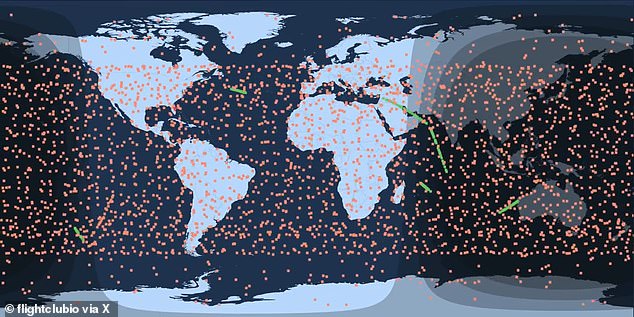
Her new research is based on estimates that Musk’s SpaceX is currently burning more than 1.3 tons of internet satellite debris in Earth’s atmosphere every hour, creating a metallic layer of “conductive particles” in orbit. There are now 5,504 Starlink satellites above Earth (photo)
Particles from these satellites, at the end of their life cycle, can “distort or trap the magnetic field” that keeps Earth’s atmosphere from escaping, the physicist said, “with all the highly conductive metal debris all settling into one region.”
Although she notes that this is an “extreme case,” such a low-charged metal dust could lead to “atmospheric stripping,” similar to the fate of Mars and Mercury in ancient times.
After working on NASA’s comet-capturing Stardust spacecraft research team in 2012, Dr. Solter Hunt spent three years at the US Air Force Research Laboratory.
There she studied the electromagnetic behavior of plasma plumes in low Earth orbit (LEO), the region of the upper atmosphere where Starlink’s orbital network is located. She now consults on the impact of space weather on the aerospace industry.
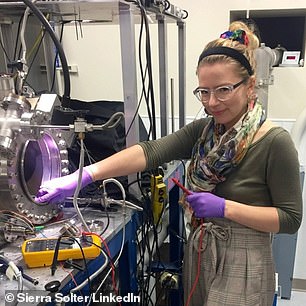
Seattle-based scientist Sierra Solter-Hunt (pictured) thinks floating metallic space junk is likely to settle in the upper part of the ionosphere — about 50 to 400 miles above Earth’s surface — weakening the magnetic field
“We currently have about 10,000 satellites in orbit, but in 10 to 15 years there will probably be 100,000,” Dr. Solter-Hunt to DailyMail.com.
“By the time we get to 100,000, I think it could be too late,” she said, “in terms of this unplanned geoengineering experiment that’s going to happen.”
The reason for her concern is that this enormous metal waste already far outweighs the weight of the magnetically charged particles that protect the Earth from cosmic rays.
The heaviest known part of Earth’s magnetosphere are the large loops of trapped particles, called Van Allen Belts – two doughnut-shaped regions of small particles activated by cosmic rays from the sun.
The belts run from the magnetically charged north and south poles of the Earth.
The weight of this vital area is impossibly small compared to the metal waste it could cut from the Earth Van Allen belts have only a total mass of 0.0004 lbs (or about 0.00018 kilograms).
“The masses of other parts of the magnetosphere (ring current, plasmasphere, etc.),” as she notes in her new paper, posted on Cornell’s arXiv‘are not widely estimated, but are less dense than the Van Allen Belts.’
In other words, this light weight and low mass of the magnetosphere mean that a large amount of heavy satellite debris could have a dramatic, unprecedented impact.
“I think we should immediately stop using the ionosphere and the atmosphere as a waste bin for the space industry,” she told DailyMail.com
In recent years, both academic astronomers and SpaceX’s satellite company competitors have filed formal complaints with the U.S. Federal Communications Commission (FCC) over SpaceX’s Starlink ambitions.
Astronomers in particular are concerned that the company’s space junk could permanently disrupt ground-based observatories, bringing space research to a halt.
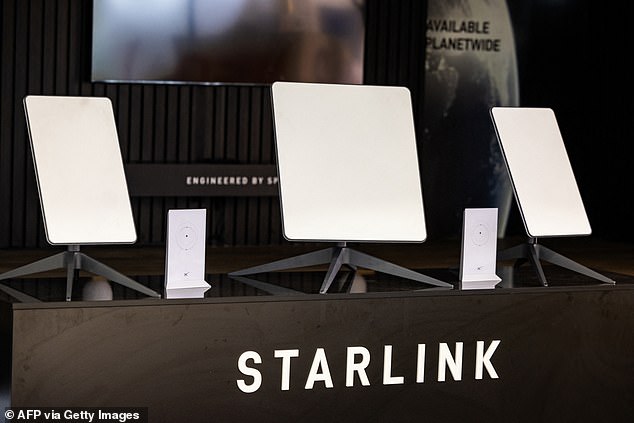
The article by Dr. Solter-Hunt, which is currently under peer review, follows years of formal complaints to the US Federal Communications Commission (FCC) filed by academic astronomers and SpaceX satellite rivals, who have protested Starlink’s impact on the fundamental study of the room.
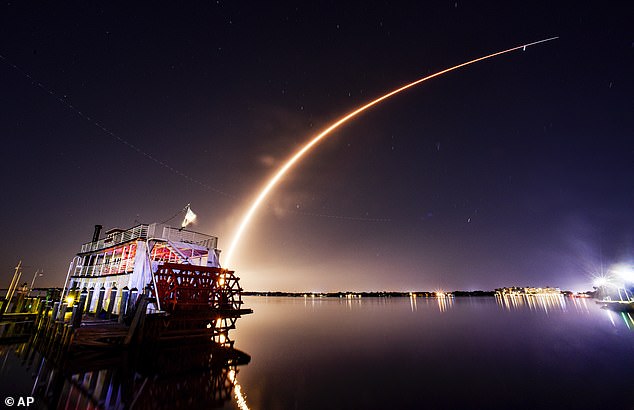
“The addition of nearly 30,000 Starlink satellites will disrupt the entire field of astronomical research,” as the FCC summarized academic researchers’ complaints in its Nov. 29, 2022 ruling on SpaceX’s Gen2 satellite plans
“The addition of nearly 30,000 Starlink satellites will disrupt the entire field of astronomical research,” as the FCC summarized academic researchers’ complaints in their ruling of November 29, 2022 about SpaceX’s Gen2 satellite plans.
Several scientists have written letters to the agency to express their concerns, including a Canadian astronomer and professor of planetary sciences Dr. Samantha Lawler And Dr. Meredith Rawlsa researcher at the Vera C. Rubin Observatory.
‘When I met Dr. Lawler (…) heard talk about how no one knew what could happen if satellites come back in and cause regular debris,” Dr. Solter-Hunt to DailyMail.com, ‘I wanted to look at it. further as part of my PhD in plasma physics.’
However, some astrophysicists and planetary scientists have expressed skepticism about the new paper’s hypothetical worst-case scenario.
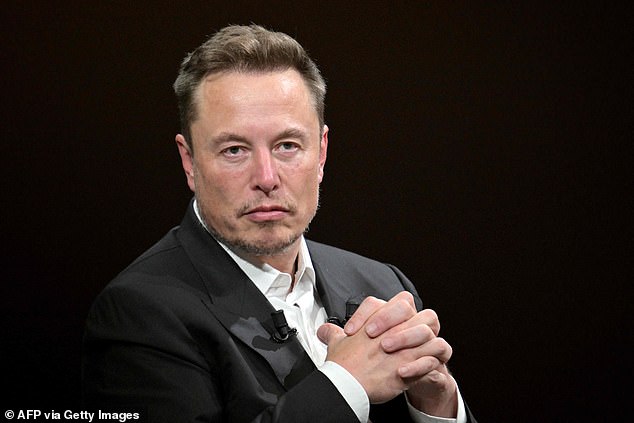
One critic of the paper, researcher Fionagh Thompson of the University of Durham in Britain, said Dr. Solter-Hunt for the number of future satellites “seems exaggerated,” because companies’ ambitious launch plans are often overhyped. Above, SpaceX owner Elon Musk
From the University of Durham in Great Britain, researcher Fionagh Thompson said Living Science that Dr.’s estimates Solter-Hunt for the number of future satellites “seems exaggerated” because companies’ ambitious launch schedules are often overhyped.
The article is an “interesting thought experiment,” she noted, but added that “it should not be definitively portrayed as ‘this is what’s going to happen.’
A magnetosphere expert and planetary scientist at the University of Rochester in New York, Dr. John Tarduno, specifically criticized the new paper’s hypothesis that the density of metal debris could become so thick that it cuts off the Earth from its Van Allen belts like a magnetic shield. .
“Even at the densities (of spacecraft dust) discussed, a continuously conducting shell such as a true magnetic shield is unlikely,” said Dr. Tarduno.
He said some of the study’s assumptions were probably “too simple and probably incorrect.”
But Dr. Solter-Hunt told DailyMail.com that none of her critics have been able to poke holes in her premise, even when she has personally asked for deeper constructive criticism.
“I contacted (some of) them for further clarification on how I could improve the research, but they simply did not know how I could improve my electrostatic signature research,” she said. “Or they were unreachable.”
“So I don’t think there are any real scientific critics at this point,” she concluded, “and the paper is in the peer review process.”
Dr. Lawler, the astronomer at the University of Regina in Canada who inspired her research, called the new study “a very important first step” that brings needed attention to the “scary” amount of spacecraft dust accumulating in Earth’s atmosphere .
“The consequences (of this satellite pollution),” said Dr. Lawler, ‘can also occur on a completely different scale than we are used to thinking.’
DailyMail.com has contacted SpaceX’s PR team for comment and will update this article if the company responds.
